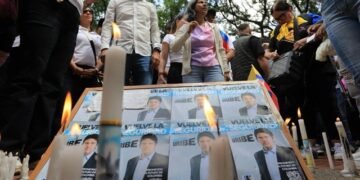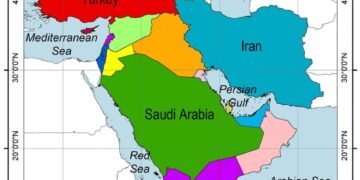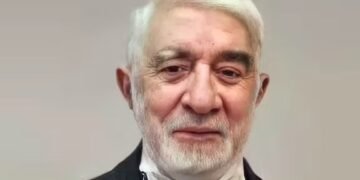“Editor-in-Chief: SHAPOUR-T”
On Sunday afternoon, the sound of powerful explosions echoed across the Iranian capital, and thick smoke rose from at least nine separate locations in Tehran. As state media remained conspicuously silent, international outlets and social media painted a starkly different picture—one the regime is desperately trying to conceal: Tehran is now on the frontline of a war.
According to multiple reports, Israeli fighter jets targeted key sites deep within the city, including buildings affiliated with the IRGC and air defense systems. These were not symbolic strikes; they were direct hits on the Islamic Republic’s military nerve centers.
Among the reported casualties is Amir Ali Hajizadeh, a senior commander of the IRGC’s Aerospace Force. Israeli sources claim that through a tactical deception operation, several high-ranking officials, including Hajizadeh, were targeted in an underground command center. Whether or not every detail holds, the message is clear: Iran’s military apparatus is penetrable and vulnerable.
And once again, the same old script plays out: hollow threats, denial of casualties, and empty promises of “resistance.” But the truth is, the Islamic Republic only seeks peace when it has lost all leverage to negotiate.
Today, Tehran’s streets are not jammed with everyday traffic, but with vehicles fleeing the capital. Major highways—including Tehran-North, Tehran-Qom, and Haraz—are packed with cars. Schools and mosques have been designated as emergency shelters. The public isn’t resisting; they’re trying to survive.
On the other side, Israeli Prime Minister Benjamin Netanyahu has framed this conflict as a “battle for survival,” declaring that the aim is to dismantle Iran’s missile and nuclear programs. He claimed that if Israel hadn’t launched its operation, Iran could have amassed 20,000 ballistic missiles within two years. This, he says, justified the attack—and now, Israel is openly trying to pull the U.S. into a joint military strike on Iran’s Fordow nuclear facility.
In a statement, the IRGC claimed it had intercepted dozens of drones and missiles. Yet the ground reality tells another story: high-ranking commanders are dead, strategic sites are damaged, and Tehran is engulfed in crisis.
Perhaps most striking is the regime’s continued denial—even in the face of disaster. Iran’s Foreign Ministry denied sending a message to Israel via Cyprus, despite the Cypriot president confirming that such a request had come from Supreme Leader Ali Khamenei himself. This glaring contradiction is emblematic of the Islamic Republic’s long-standing approach: one narrative for the domestic audience, another for the global stage.
Conclusion:
The crisis facing the Islamic Republic is not just military—it’s existential. A regime built on delusion, propaganda, and self-deceit is now confronting a bitter reality it can no longer censor. And, as always, it will turn to diplomacy—but only once it has nothing left to bargain with.

 English
English






































